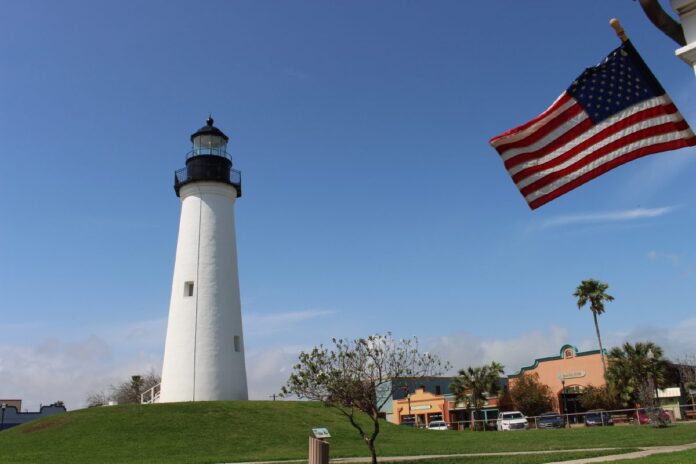PORT ISABEL — It’s a Valley icon.
As far as the town’s people are concerned, the Port Isabel Lighthouse has become the city’s identity and serves as its brand.
Now, the city is concerned about what will become of the stewardship of the 166-year-old, state-owned lighthouse.
Two companion bills recently filed in the Texas House and Senate could put a 23-year-old agreement between the city of Port Isabel and the Texas Parks and Wildlife Department (TPWD) in jeopardy.
The agreement allows the city of Port Isabel’s Department of Historical Preservation to daily operate, generate revenue and manage maintenance of the lighthouse.
However, if the identical SB 605 and HB 1422 are passed, stewardship, operations and generated revenue would be transferred from TPWD to the Texas Historical Commission (THC) as early as Sept. 1 of this year.
City Manager Jared Hockema said he went to the state Capitol on Tuesday to discuss the city’s concerns with legislators.
“Our concern is one, we have a great relationship with Texas Parks and Wildlife and would like for that to continue,” Hockema said. “Two, if there is a change in the stewardship of the lighthouse, we’re anxious that the agreement will remain the same, and we will continue to be able to operate the lighthouse in the manner that we do now.”
Hockema said it’s a matter that the city has been watching for a while.
City officials passed a resolution in July 2018 stating the city’s wish to continue their agreement with the TPWD.
“Regardless of what happens, we want to keep the same arrangements with whichever agency the lighthouse ends up with,” Hockema said.
Several events, such as Lighthouse Market Day, Queen Isabella Market Day and Lighthouse Establishment Cinema are held annually throughout the year.
According to Port Isabel Marketing Director Valerie Bates, the lighthouse has a big impact on the town.
“It’s a tourism beacon,” Bates said. “Nearly tens of thousands of people visit the park every year and nearly 20,000 climb all the way up to the lighthouse, so it’s an important part of our economic impact for sure.”
Scott Hanson and his family made their first trip to the lighthouse from Boise, Idaho.
“My family and our relatives from Nebraska decided to meet at the lighthouse because we could all find it since we were traveling separately,” Hanson said. “We figured after we visited the lighthouse, we’d check out all of the restaurants and shops around here.”
Why were these bills created?
The Texas Legislature has a process called the Sunset Review of Agencies periodically once every 12 years and began its most recent review in 2017.
Texas state Rep. Chris Paddie, Sen. Brian Birdwell and Sen. Dawn Buckingham wrote the bills as a result of the review.
In addition to the Port Isabel Lighthouse, seven other historical sites — including Battleship Texas, Fanthorp Inn, Fort Leaton, Lipantitlan Monument Hill, San Jacinto Battleground and Washington-on-the-Brazos — could have their stewardship, operations and generated revenue transferred to the Texas Historical Commission if the bills are passed.
According to Texas Sunset Commission officials, the bills aren’t designed to have a financial impact or change.
Sunset Commission officials clarified that the state of Texas is still the owner whether the Port Isabel Lighthouse is with the TPWD or the THC.
One agency is geared more toward historic preservation of sites and the other is geared toward parks and outdoor recreation.
According to Sunset Commission officials, the bills were designed to ensure “efficient and effective maintenance of the property and improvement in the historic narrative.”
Did you know?
• The Port Isabel Lighthouse was built in 1852 to guide ships through the Brazos Santiago Pass to Port Isabel.
• It closed in 1864 due to the Civil War.
• It Re-opened in the 1870s.
• It has been used as a tourist attraction since 1905.
• It was declared a Texas State Park in 1952 and is the second smallest park in the state.
• It is the only Texas lighthouse open to the public.
Source: Museums of Port Isabel





